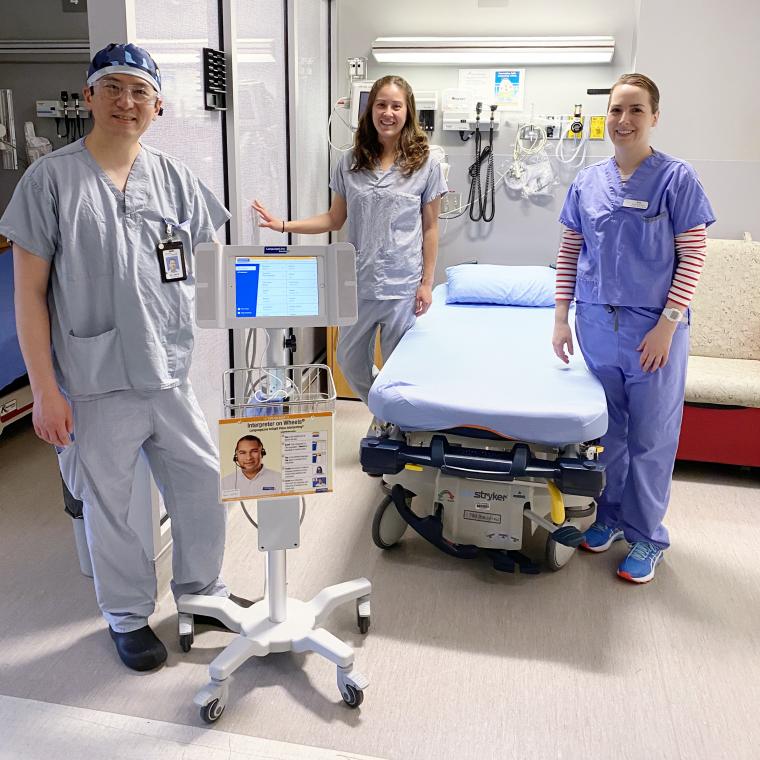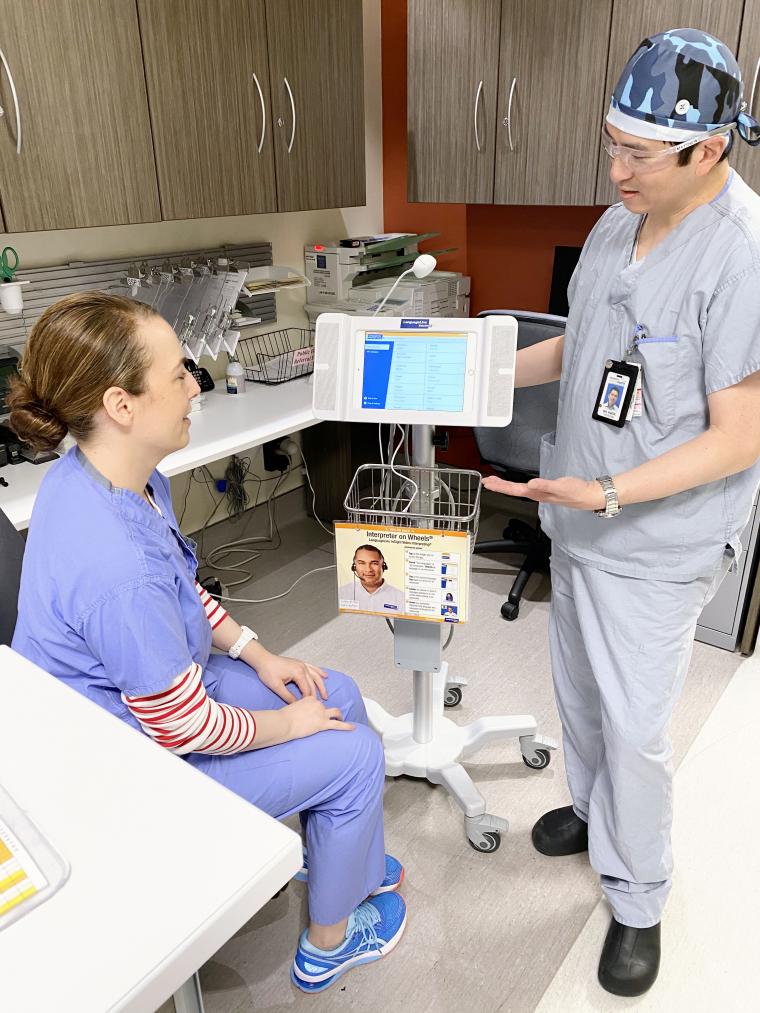For most people, a visit to the Emergency Room is stressful. Imagine how much more stress you would feel if you don’t speak the language of your health care providers. That is the ongoing challenge at Richmond Hospital’s ER, where over 50% of patients speak mainly Mandarin or Cantonese and interpreters are not always available.
Add to this the increased challenge presented by COVID-19. Family members or friends who would normally escort patients into the ER and act as interpreters cannot do that due to concerns about infection.
For Dr Matthew Kwok, an emergency physician at the hospital, the drive to help address this challenge is both professional and personal.
“I came to Canada when I was in fifth grade and remember the struggles of not being able to communicate.” He added that this is especially an important challenge to tackle in an emergency room where “patients have added physical pain and need to be understood accurately.”
Searching for an innovative solution
 In searching for a solution, Dr Kwok spearheaded a Physician Quality Improvement (PQI) project funded by the Specialist Services Committee in partnership with Vancouver Coastal Health to determine whether a rolling iPad device called Interpreter on Wheels (IOW) would be as effective as a live interpreter. His project team was composed of physicians, nurses, health authority, provincial language services and PQI project manager.
In searching for a solution, Dr Kwok spearheaded a Physician Quality Improvement (PQI) project funded by the Specialist Services Committee in partnership with Vancouver Coastal Health to determine whether a rolling iPad device called Interpreter on Wheels (IOW) would be as effective as a live interpreter. His project team was composed of physicians, nurses, health authority, provincial language services and PQI project manager.
Rolled up to the patient, IOW operates like a three-way Zoom call between patient, interpreter and health care provider. Expert medical interpreters – not robots – provide the service. Some 200 languages are on tap, including 20 Chinese dialects. Patients select the language or dialect they’re most familiar with and choose audio or video. Audio is less expensive for the hospital and works like a phone. The video option is better when, for example, a health care provider needs to show the interpreter information about a medicine; the interpreter can then explain it to the patient.
When the COVID-19 pandemic hit BC, it provided an opportunity to see how it would work at a time when patients were unable to bring family members or friends into the ER. Wiped down after use, the iPad could not get sick or infect anyone.
Dr Kwok: “Everyone loved it”
 With respect to next steps, Dr Kwok’s Access to Translator project will compare the pros and cons of both kinds of interpreters, including cost, patient satisfaction and staff satisfaction. But he is already impressed by what he has seen.
With respect to next steps, Dr Kwok’s Access to Translator project will compare the pros and cons of both kinds of interpreters, including cost, patient satisfaction and staff satisfaction. But he is already impressed by what he has seen.
Patients now feel that someone in the ER ‘’speaks my language,” said Dr Kwok. He added: “Everyone loved it.”
Satisfied patients included a deaf man with hip pain, who ordinarily would have had to explain his symptoms in writing. Instead, within seconds of being admitted, he was able to communicate in American Sign Language.
“We were able to take an accurate history, guide him through a focused physical exam, provide discharge instructions, and answer his questions,” said Dr Kwok.
IOW affects patient care in three ways, he said, through improved communication, heightened privacy and patient satisfaction. It allows them to use a neutral third party as an interpreter, rather than a family member, increasing their privacy. With clear communication, their care can better meet their needs, resulting in greater job satisfaction for staff, as well.
The device can be more expensive than a live interpreter, because it’s priced per-minute, rather than at a fixed hourly rate. On the other hand, it’s extremely diverse and always available.
“I hope we can keep the technology long-term,” he concluded. “It’s good medical care and it’s safe medical care, and it also improves patient satisfaction. To me, it’s money well spent.”
